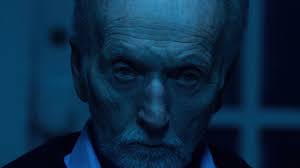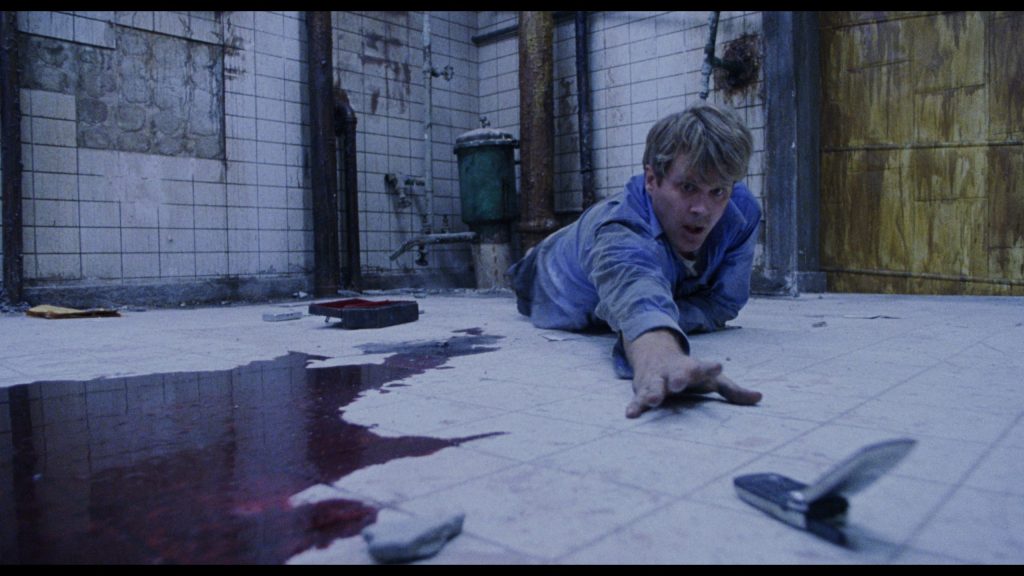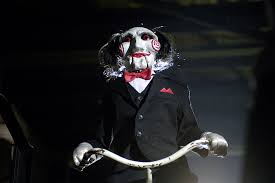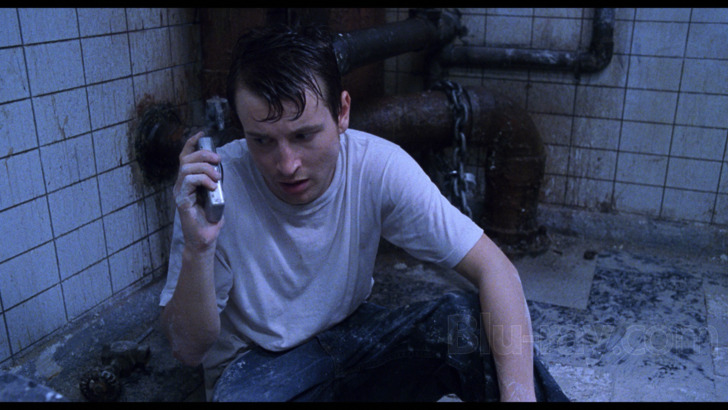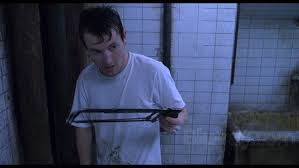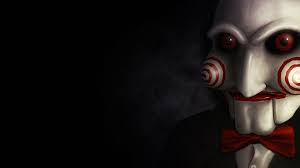“Saw” (2004)
Horror

Running Time: 103 minutes
Written by: Leigh Whannell
Featuring: Cary Elwes, Danny Glover, Monica Potter, Michael Emerson, Ken Leung and Leigh Whannell
John: [to Amanda] “Congratulations. You are still alive. Most people are so ungrateful to be alive. But not you. Not anymore.”
“Saw” (2004), directed by James Wan and written by Wan and Leigh Whannell, is a landmark film in the horror genre. It’s not just a movie; it’s an experience that thrusts viewers into a twisted game of life and death. With its gritty atmosphere, inventive storytelling, and memorable characters, “Saw” challenged the conventions of horror cinema and left an indelible mark on audiences worldwide. In this review, we’ll delve deep into the dark corridors of “Saw,” examining its themes, characters, and impact on the horror genre.
The plot of “Saw” revolves around two men, Adam and Lawrence, who awaken to find themselves chained in a dilapidated bathroom with no memory of how they got there. As they struggle to piece together their situation, they discover cassette tapes left by their captor, the notorious Jigsaw Killer. Jigsaw, a sadistic mastermind, informs them that they must complete his twisted games to survive. As the clock ticks down, Adam and Lawrence must confront their darkest secrets and make impossible choices to escape Jigsaw’s deadly trap.
At its core, “Saw” is a meditation on the nature of human survival and morality. The film explores the lengths to which people will go to save themselves or others when faced with extreme circumstances. Jigsaw’s elaborate traps force his victims to confront their sins and make life-or-death decisions, blurring the line between right and wrong. Themes of redemption, sacrifice, and the consequences of one’s actions permeate the narrative, adding depth to the visceral horror.
One of the most compelling motifs in “Saw” is the concept of the “reverse bear trap,” a gruesome device that symbolizes the characters’ struggle to break free from their past mistakes. The imagery of the trap, with its razor-sharp teeth poised to tear flesh apart, is both horrifying and symbolic of the psychological torment endured by the victims. As they confront their inner demons, they must also grapple with the physical threat of Jigsaw’s traps, heightening the tension and suspense.
Central to the success of “Saw” are its complex and morally ambiguous characters. Jigsaw, portrayed with chilling intensity by Tobin Bell, is a fascinating antagonist whose motives transcend mere sadism. His twisted philosophy, rooted in a desire to make his victims appreciate the value of life, adds a layer of depth to the character. Despite his monstrous actions, there’s a perverse logic to Jigsaw’s madness that makes him a compelling figure in the annals of horror villains.
Adam and Lawrence, played by Leigh Whannell and Cary Elwes, respectively, serve as the audience’s surrogates, experiencing the horror of Jigsaw’s games firsthand. As they struggle to unravel the mystery of their captivity, their flaws and vulnerabilities are laid bare, making them sympathetic protagonists. Whannell and Elwes deliver powerhouse performances, capturing the desperation and terror of their characters with raw authenticity.
From its grimy cinematography to its haunting score, “Saw” is a masterclass in atmospheric storytelling. Director James Wan creates a palpable sense of dread that permeates every frame, immersing viewers in the nightmarish world of the film. The use of low-key lighting and claustrophobic set design enhances the feeling of confinement and isolation, amplifying the psychological horror.
One of the most striking aspects of “Saw” is its inventive use of practical effects to depict the gruesome aftermath of Jigsaw’s traps. From severed limbs to mutilated corpses, the film doesn’t shy away from graphic violence, but it never feels gratuitous or exploitative. Instead, the gore serves a narrative purpose, reinforcing the high stakes of the characters’ predicament and the ruthlessness of their captor.
“Saw” was a critical and commercial success upon its release, spawning a franchise that would redefine the horror genre for years to come. Its innovative blend of psychological terror and visceral gore inspired a new wave of horror filmmakers, paving the way for the rise of “torture porn” cinema in the mid-2000s. While subsequent entries in the franchise varied in quality, the original “Saw” remains a benchmark of excellence in modern horror.
Beyond its influence on the genre, “Saw” sparked widespread cultural discussion about the ethics of torture and the nature of fear. Its exploration of moral ambiguity and the human capacity for cruelty challenged audiences to confront uncomfortable truths about themselves and society at large. In an era marked by uncertainty and moral ambiguity, “Saw” continues to resonate with viewers as a chilling reminder of the darkness that lies within us all.
One of the most underrated aspects of “Saw” is its masterful sound design and score. Composer Charlie Clouser’s industrial-infused soundtrack adds a sinister ambiance to the film, heightening the tension and amplifying the sense of dread. From the eerie metallic clangs of Jigsaw’s traps to the pulsating electronic beats that underscore moments of suspense, the music is as much a character in the film as the protagonists themselves.
Moreover, the use of diegetic sound, such as the crackling of cassette tapes or the buzzing of fluorescent lights, contributes to the film’s immersive atmosphere. Every creak, groan, and scream serves to immerse viewers in the nightmarish world of “Saw,” ensuring that every sensory detail contributes to the overall sense of unease.
“Saw” is a masterclass in narrative tension and pacing, with its non-linear structure keeping viewers on the edge of their seats from start to finish. Through a series of carefully interwoven flashbacks and revelations, the film gradually unveils the full scope of Jigsaw’s twisted game, keeping audiences guessing until the final shocking twist.
The decision to confine the majority of the action to a single location—the dilapidated bathroom—adds to the film’s claustrophobic atmosphere and ramps up the intensity of the storytelling. Every moment feels crucial, every revelation a gut punch, as Adam and Lawrence race against the clock to escape their grim fate.
Beneath its blood-soaked surface, “Saw” offers a scathing critique of contemporary society and the lengths to which people will go to survive in a world fraught with moral ambiguity and existential dread. Jigsaw’s victims are not random strangers but individuals who have squandered their lives through complacency, greed, or moral cowardice. By forcing them to confront their sins in the most visceral way possible, Jigsaw holds up a mirror to society’s darkest impulses and challenges viewers to examine their own values and priorities.
Furthermore, “Saw” explores the theme of justice versus vengeance, raising provocative questions about the ethics of punishing wrongdoers and the nature of redemption. Is Jigsaw a vigilante seeking to mete out justice to those he deems unworthy of life, or is he merely a sadistic madman driven by a twisted sense of morality? The film leaves these questions open to interpretation, inviting viewers to grapple with the complexities of morality and the nature of evil.
“Saw” is a harrowing descent into the depths of human depravity that transcends the confines of traditional horror cinema. With its thought-provoking themes, complex characters, and visceral thrills, it’s a film that lingers in the mind long after the credits roll. Whether you’re a seasoned horror aficionado or a casual viewer, “Saw” is an essential entry in the pantheon of great horror films and a testament to the power of cinema to provoke, disturb, and ultimately, enlighten.
